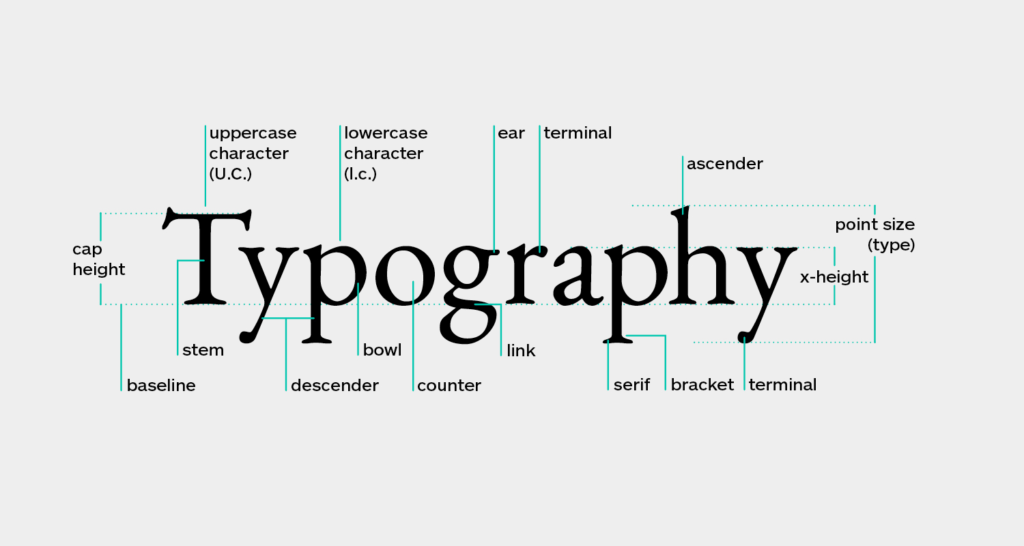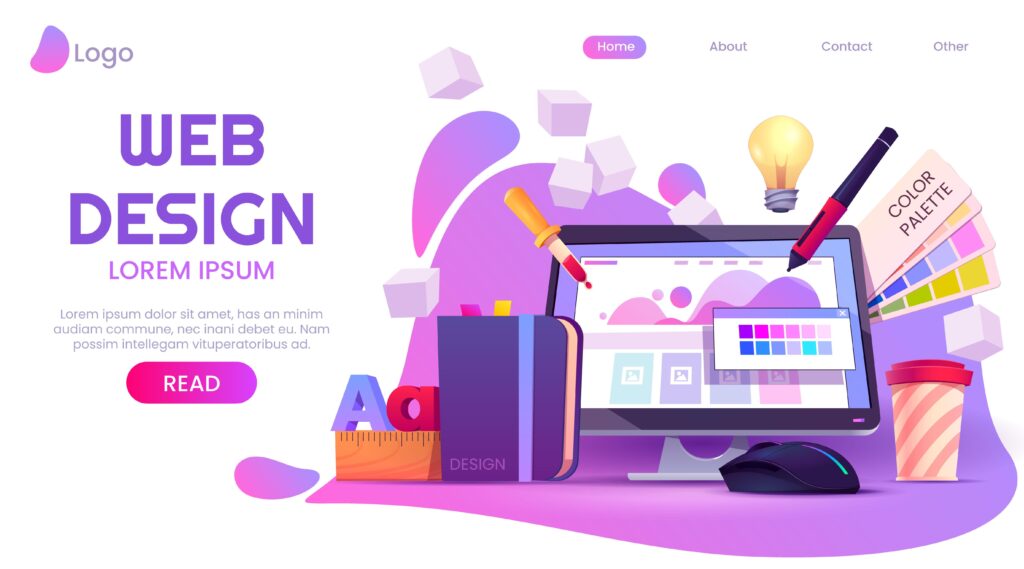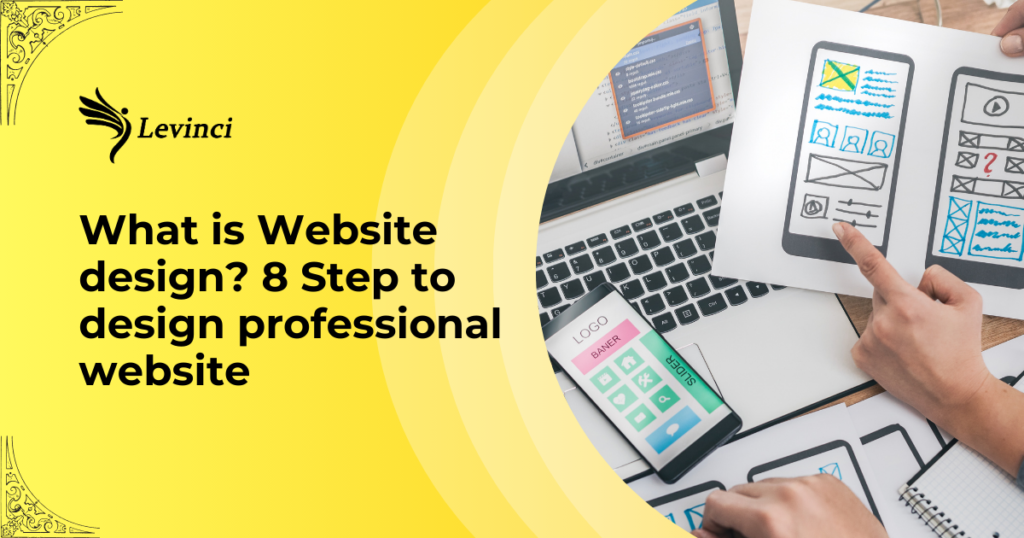Having a website is essential for any business, individual, or organization looking to establish an online presence. But simply having a website isn’t enough. To truly captivate and engage your audience, you need a professional website design – one that’s user-friendly, visually appealing, and optimized for its purpose. In this article, Levinci will guide you through the eight essential steps to design a professional website.
What is Website design?

Website design is the process of creating the overall interface for the website you are using. It is a complex process that involves planning and building website elements, from structure and layout to images, colors, fonts and graphics.
Web design has many components that work together to create the complete experience of a website, including graphic design, interface design, user experience design, content creation, and search engine optimization ( SEO). These elements determine how a website looks and behaves on different devices: computers, smartphones, and tablets.
Why do businesses need a website?
Businesses need a website for several key reasons:
- Online Presence and Credibility: In today’s digital age, consumers expect businesses to have a website. It acts as a digital storefront, allowing customers to find you and learn about your offerings. Without a website, you may appear less credible and miss out on potential customers searching for businesses online.
- Increased Visibility and Reach: A website makes your business visible to a global audience, not just those in your local area. Search engines can index your website, allowing potential customers to find you when searching for products or services you provide.
- 24/7 Availability: Website provides customers with information about your business, products, and services any time of day, anywhere in the world. This can be especially helpful for businesses with international reach or those targeting customers who prefer to research after hours.
- Improved Brand Storytelling: A website allows you to craft a compelling brand story and showcase your unique identity. You can use high-quality visuals, videos, and content to engage your audience and build trust with potential customers.
- Cost-Effective Marketing: Compared to traditional marketing methods like print ads or TV commercials, a website is a relatively cost-effective way to reach a large audience. You can update your website content regularly to keep it fresh and relevant, without incurring additional printing or advertising costs.
Overall, a website is a crucial asset for any business in today’s digital landscape. It allows you to connect with customers, build your brand, and achieve your business goals.
8 Steps to design a professional website
Determine design purpose and customer requirements

What is needed to design a website is the purpose of the website. A website is often designed to serve a specific business purpose. By determining the customer’s website design goals, you can understand what the customer expects from the website and come up with appropriate interface design ideas. Identifying customer goals and requirements will help ensure the website delivers the desired results.
Market research
Market research can help you understand the design trends of websites from industry competitors. For example, you can search for competitor websites with high traffic and find out what makes their website interface stand out. Sometimes competitors can get customers because their website design is beautiful and professional.
By exploring and analyzing similar websites in the same industry, you can identify design trends, strengths, and weaknesses of your competitors. Thanks to this, you can create a website that is superior and different from your competitors.
Choose domain name and hosting
After researching to build a website, you need to pay attention to the domain name and hosting. Here, businesses will choose the appropriate domain name and hosting package for their website. The design unit will advise further if necessary.
Brainstorm layout ideas
Based on the information obtained from the above two steps, you can start to get an idea of the overall layout of your website. Conceptualizing a website layout is the process of identifying and arranging the main elements on a website, including elements such as headers, menus, main content, images, charts, widgets, and footers.
The purpose of brainstorming website layout ideas is to create a structure that makes sense and can create a good user experience. A good layout needs a clear and easy-to-use navigation system. You need to determine how your menus and links are organized so users can easily navigate between pages and sections of your website. Especially important information and content items need to be placed in easy-to-find locations.
Choose design style and color

Next, you need to decide on the design style that suits your customers based on many factors such as business goals, industry, customer target, brand elements and desired user experience.
For example, a website for a company specializing in natural products may choose an elegant style, while an art website may choose more creative and unconventional styles.
Furthermore, you should also choose the right color because it can create emotions, convey messages and create a first impression for users. For example, bright colors like red, yellow, and green can create a feeling of dynamism, youthfulness, and fun. Websites related to sports, entertainment or children often use these colors to create an impression of energy and excitement.
Choose text style

Font selection in web design is an important factor in creating a good user experience. Fonts should match the overall design style of the website. If you are designing a website with a minimalist style, traditional and simple fonts are a reasonable choice. Meanwhile, a creative and unique website can use more unique and artistic fonts.
When choosing a font, make sure it is compatible with different operating systems, browsers, and devices. Some fonts may not display properly on some browsers or mobile devices. Therefore, you should check how the text is displayed on different devices to make sure it doesn’t have font errors or is difficult to read.
Manage and maintain website
Once the graphical elements on the interface have been processed, you can start posting content to the website. Content management systems such as WordPress, etc. can help you manage and update website content conveniently. The CMS system allows you to change and edit content, add images, manage posts and create new posts with ease.
If there’s nothing that needs editing, the website is basically ready to go. Regularly update the content on your website and ensure that outdated information is promptly removed. It is also important to periodically check for features or technical errors so that visitors do not have problems viewing the website.
Design a professional website with Levinci

As a professional website design unit with more than 8 years of experience operating in the market and having implemented many large projects for different customer partners, Levinci believes it can bring to stores and businesses professional and suitable website design service. Working with us, customers do not need to worry about website design issues because everything is answered quickly with outstanding service quality.
Levinci will discuss with customers to come up with website design ideas that best meet business requirements and efficiency, not only have a beautiful, impressive and unique interface but also have appropriate features, enhance user experience and purchase conversion rate on the website.
If you need to design a website, contact Levinci today for advice and timely answers to your questions.
Conclusion
By following these eight steps and keeping user experience at the forefront of your design decisions, you can craft a professional website that not only looks great, but also effectively achieves your goals. Remember, a well-designed website is an investment in your online presence, attracting and engaging your target audience, and ultimately driving success for your business or brand. If you are looking for a professional website design unit, contact Levinci now!

